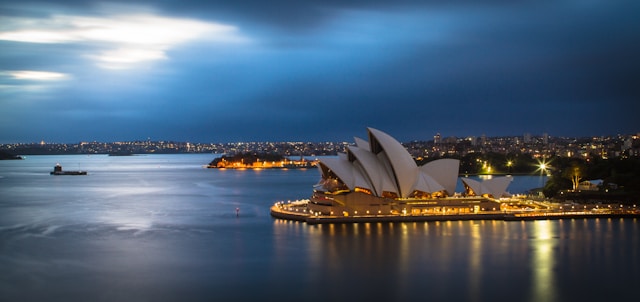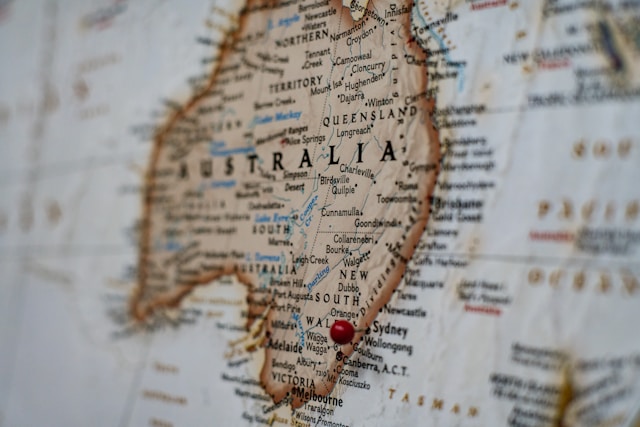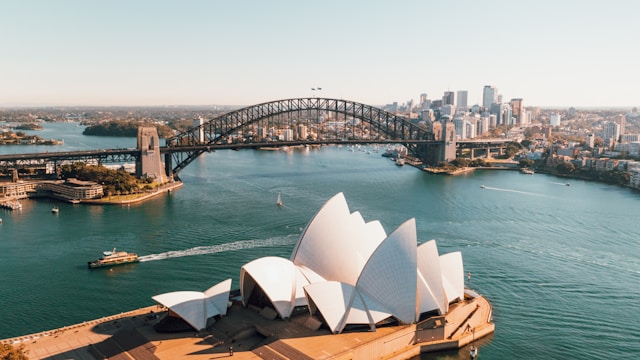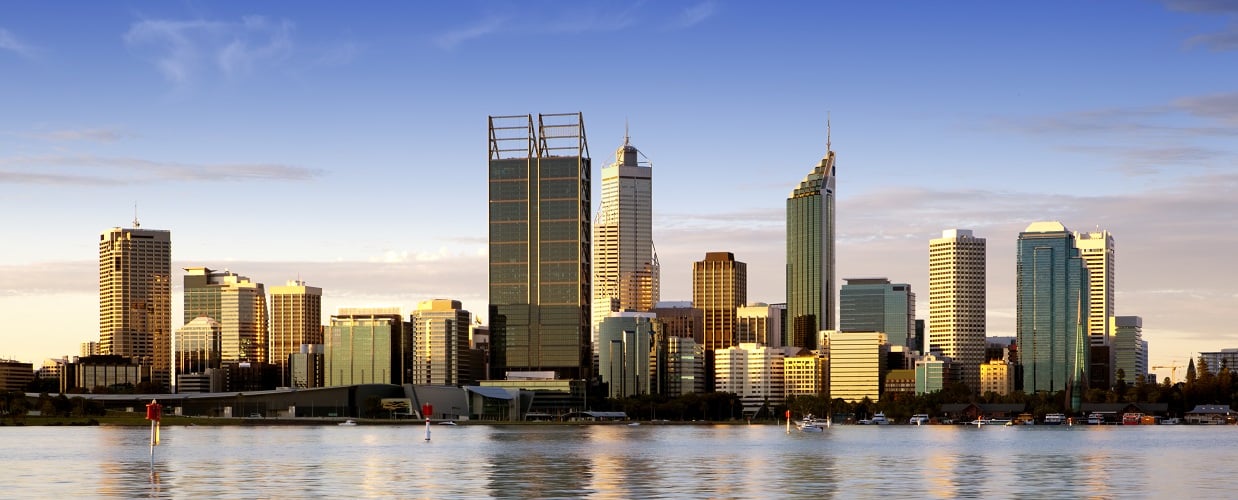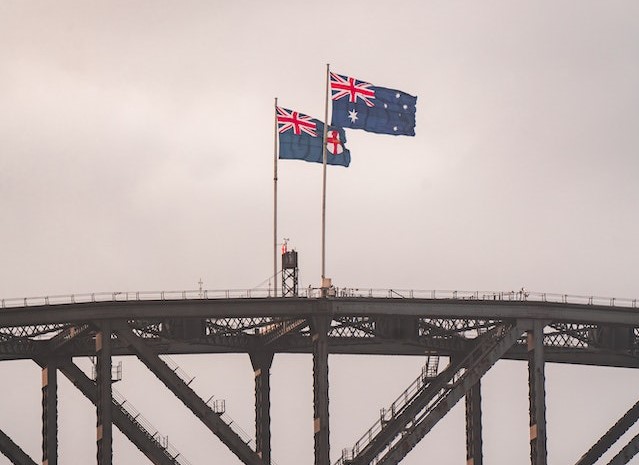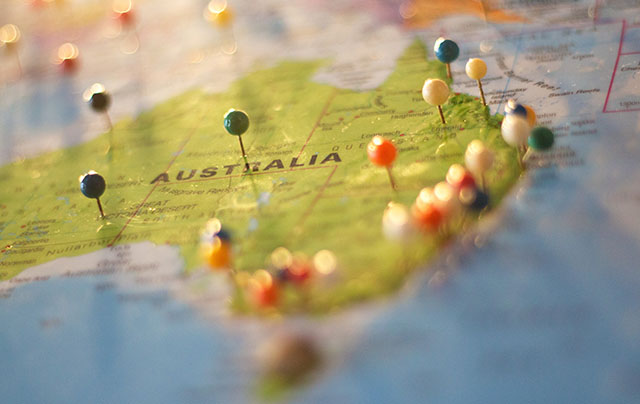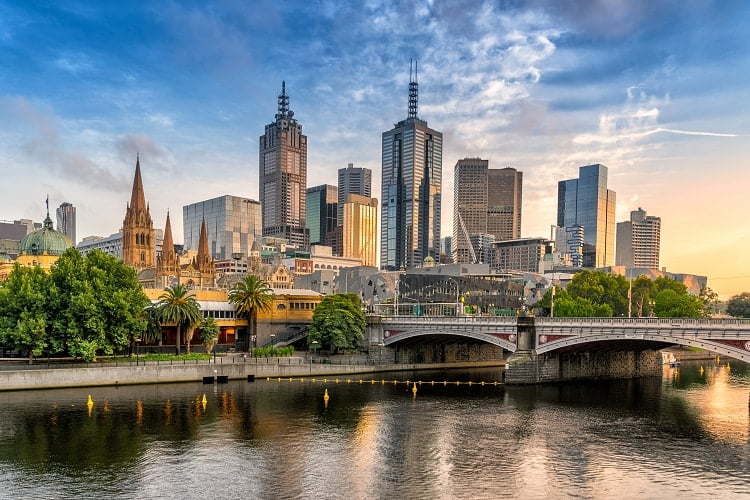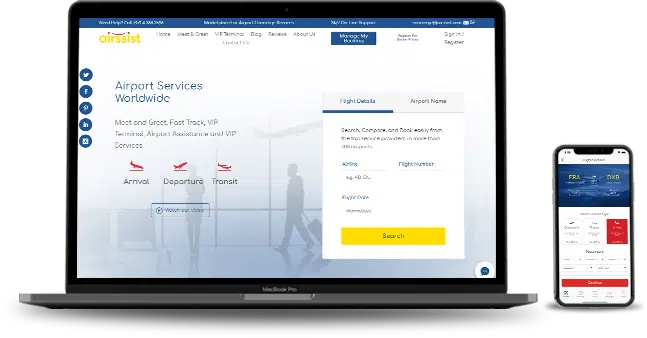Table of Contents
Are you heading to Australia for the first time? Whether your visit is for business or leisure, you’re in for a treat with amazing experiences, from diving into the vibrant culture to visiting iconic landmarks and exploring diverse landscapes. Australia’s tourism industry is booming, with both domestic and international travel on the rise. By 2027, it’s expected that domestic visitor nights will reach 465.8 million, and there will be 126.2 million domestic overnight trips. Moreover, domestic day trips are projected to reach 244.4 million, with expenditures for overnight and day trips anticipated to hit $137.9 billion and $41.1 billion, respectively, by 2027.
International visitor spending is also surpassing pre-pandemic levels in 2024, and this upward trend is likely to continue, with forecasts suggesting an increase to $48.8 billion by 2027. This growth underscores Australia’s rising status as a premier travel destination.
In this guide, we’ll provide you with essential tips for first-time travelers to Australia, covering everything from effective trip planning and navigating the efficient transport system to immersing yourself in the unique local culture. To make your journey even more enjoyable and stress-free, we’ll also explore how services like airssist concierge assistance can enhance your adventure in Australia.
Australia as A Major Travel Destination
Australia is one of the most popular travel destinations in the world, known for its stunning natural landscapes, rich cultural diversity, and vibrant cities. Whether you’re attracted to the beautiful beaches, unique wildlife, or the lively atmosphere of its urban centers, Australia offers something for every kind of traveler. Whether you’re looking for a peaceful retreat or an adventurous trip, the country’s charm and variety promise unforgettable experiences. Here’s a handy guide to help you navigate your travels in Australia, filled with essential facts and tips to ensure a smooth journey.
Australia – Quick Facts
- Flight Time: 8-12 hours from major cities in Asia; 15-18 hours from North America; 22-24 hours from Europe
- Time Difference: GMT +8 to +11 (depending on location and daylight savings)
- Language(s): English (Australian English)
- Currency: Australian Dollar (AUD)
- Electricity: Type I plug (230V)
- Driving Side: Left.
Why Visit Australia?
For Culture Lovers
Australia has a rich cultural heritage that blends indigenous traditions with European influences, evident in its vibrant art scene, historic sites, and diverse festivals. From famous galleries to annual cultural celebrations, Australia’s culture enchants visitors.
Sydney Opera House
A highlight for anyone traveling to Australia, the Sydney Opera House is an architectural wonder and a cultural icon of the nation. It frequently hosts a range of performances, including opera, ballet, theater, and concerts. With its breathtaking design and exceptional acoustics, it’s an ideal spot for culture enthusiasts. Visitors can take guided tours to learn about its history and admire its iconic sails.
Melbourne’s Art and Laneways
Recognized as Australia’s cultural capital, Melbourne boasts a lively arts scene. The National Gallery of Victoria (NGV) is among the oldest and most frequented art galleries in the country, featuring works from both international and local artists. The city’s laneways, like Hosier Lane, are adorned with vibrant street art, while events such as the Melbourne International Arts Festival and the Melbourne International Film Festival provide rich cultural experiences for visitors year-round.
Adelaide Fringe Festival
The Adelaide Fringe is one of the largest open-access arts festivals in the world, celebrating creativity in various forms, from theater and dance to circus and comedy. Taking place annually in February and March, the festival draws artists from around the world, making it a must-visit for culture lovers in search of something special.
For Nature Lovers
Australia’s vast natural beauty is truly remarkable, featuring ancient rainforests, pristine beaches, iconic landmarks, and unique wildlife. Whether you enjoy hiking, diving, or simply soaking in the great outdoors, Australia provides endless opportunities for nature exploration.
Great Barrier Reef
The Great Barrier Reef, recognized as a UNESCO World Heritage site, is an essential destination for nature enthusiasts. It is the largest living organism on the planet, brimming with marine life, including vibrant corals, turtles, and a variety of fish species. Snorkeling and scuba diving are popular activities, with numerous tours available to help you discover the underwater wonders. The reef is not only a natural marvel but also a vital location for marine research and conservation initiatives.
Kangaroo Island
Situated off the coast of South Australia, Kangaroo Island boasts some of the country’s most intriguing wildlife and pristine landscapes. The island is renowned for its diverse animal population, including kangaroos, koalas, and sea lions. Flinders Chase National Park, with its rugged coastline and distinctive rock formations like Remarkable Rocks, is a perfect spot for nature lovers and photographers alike.
Uluru (Ayers Rock)
Uluru, a colossal sandstone monolith located in the heart of the Northern Territory, stands as one of Australia’s most iconic natural landmarks. The rock is of great cultural significance to the indigenous Anangu people, and visitors can gain insight into its spiritual importance through guided walks. Experiencing the changing colors of Uluru at sunrise or sunset is a breathtaking moment that every nature lover should witness.
Blue Mountains
Just a short drive from Sydney, the Blue Mountains National Park presents a stunning landscape filled with dramatic cliffs, waterfalls, and eucalyptus forests. The Three Sisters rock formation is a highlight of the park, and visitors can explore it through hiking trails or take a scenic cable car ride for breathtaking views of the surroundings.
Night Life
Australia’s nightlife scene offers something for everyone, from stylish cocktail bars and top-notch clubs to traditional pubs featuring live music. Regardless of the city, there’s a variety of after-dark entertainment options available.
Sydney’s The Rocks
The Rocks is one of Sydney’s oldest neighborhoods, blending historical charm with modern nightlife. This area boasts inviting pubs like the historic Lord Nelson Brewery Hotel, where guests can savor craft beers brewed right on the premises. For a more upscale experience, The Orient Hotel serves cocktails alongside an extensive wine selection. As evening falls, live bands frequently perform, enhancing the lively ambiance.
Melbourne’s Laneway Bars
Melbourne’s laneways are famous for their hidden and distinctive bars, providing a more stylish night out. Spots like Bar Americano are nestled in alleyways, offering expertly crafted cocktails in a retro atmosphere. Eau De Vie, another local favorite, features a sophisticated speakeasy vibe with skilled mixologists. For a more relaxed outing, check out the rooftop bars in the city center, which provide stunning views of Melbourne’s skyline.
Brisbane’s Fortitude Valley
Fortitude Valley is known as Brisbane’s nightlife hub, featuring a diverse array of pubs, clubs, and bars. Popular venues include The Zoo, a live music spot that hosts both local and international acts, and Cloudland, an impressive multi-level nightclub adorned with luxurious decor and top-tier DJs. The Valley’s many bars and pubs cater to all preferences, from craft beer enthusiasts to those in search of glamorous nightclubs.
Business Centers, Conferences & Trade Fairs
Australia’s growing economy and top-notch infrastructure make it an ideal destination for business travelers and attendees of major events like conferences, trade fairs, and exhibitions. The major cities in the country boast state-of-the-art venues designed to host international business events. In 2025, Australia’s economy is projected to grow by 2.2%, fueled by increased consumer spending and investments in infrastructure, which will further boost its attractiveness for business tourism.
Melbourne Convention and Exhibition Centre (MCEC)
Melbourne serves as a central hub for international conferences and trade fairs, with the MCEC being one of the city’s standout venues. Renowned for its modern architecture and sustainable features, MCEC hosts significant events such as the Australian International Motor Show and the Melbourne International Film Festival. Nestled along the Yarra River, the MCEC provides both easy access and a beautiful backdrop for large-scale business gatherings.
Sydney International Convention Centre (ICC Sydney)
Located in Darling Harbour, ICC Sydney is the largest convention and exhibition venue in Australia. It is well-known for hosting major business events, including the Sydney International Boat Show and the Australian Tourism Exchange. With cutting-edge technology, a variety of meeting spaces, and numerous dining and entertainment options nearby, ICC Sydney continues to be a preferred choice for international conferences.
Brisbane Convention and Exhibition Centre (BCEC)
The Brisbane Convention and Exhibition Centre (BCEC) stands out as one of the top venues in the country, recognized for its expansive layout and modern amenities. It frequently hosts major international events such as the World Bio Markets and the Australian Tourism Exchange. Its commitment to sustainability and its close location to Brisbane’s business hubs make BCEC a perfect choice for large trade shows and conferences.
Additional Highlights
Melbourne Cup Carnival
The Melbourne Cup Carnival, taking place every November, is one of Australia’s most famous horse racing events. Often referred to as “the race that stops a nation,” it draws in thousands of visitors each year. Combining high fashion, gourmet dining, and exhilarating horse races, the carnival provides a luxurious and thrilling experience for attendees.
Vivid Sydney Festival
Vivid Sydney, celebrated every May and June, is a stunning festival of light, music, and ideas that transforms the city. Iconic landmarks like the Sydney Opera House and Harbour Bridge are adorned with vibrant light displays, while live music and engaging talks take the spotlight. As one of the largest festivals of its kind, Vivid Sydney attracts millions of visitors annually.
Educational Travelers
Australia is a top choice for educational travelers, boasting world-class universities and institutions. By 2025, it’s projected by The Australian Government that over 500,000 international students will study in Australia. Prestigious universities like the University of Melbourne and the Australian National University (ANU) are globally recognized for their outstanding education and research programs. These institutions consistently draw students from around the world, further solidifying Australia’s status as a premier education destination.
Preparing for Your Trip to Australia as a First Time Traveler
As a first-time traveler to Australia, being well-prepared is essential for a smooth trip and to fully enjoy everything the country has to offer. Here’s what you should know to make the most of your Australian adventure:
Passport and Visa Requirements
Before traveling to Australia, make sure your passport is valid for at least six months beyond your planned stay. Visa requirements vary based on your nationality and the purpose of your visit, and most travelers will need a visa, even for short trips. Here are some common types of visas:
- Tourist Visa (Visitor Visa): This is the most common visa for those visiting Australia for leisure, tourism, or to see friends and family. It usually permits a stay of up to three months.
- Working Holiday Visa: Available for travelers aged 18 to 30 years old (or 35 in some countries), this visa allows you to travel and work in Australia for up to a year.
- Business Visa: If you intend to participate in business activities like meetings, conferences, or trade events, you may require a business visa.
- Student Visa: If you plan to study in Australia, you will need a student visa. According to The Australian Government, by 2025, Australia is expected to continue attracting over 500,000 international students, with top universities such as the University of Melbourne and the Australian National University providing world-class education.
- Studying and Training Visas: These visas are designed for individuals coming to Australia for specific training or educational courses, allowing for extended stays based on the length of the program.
- Family and Partner Visas: If you are joining a family member or partner who lives in Australia, you might qualify for a family or partner visa. These visas enable you to live and work in Australia either temporarily or permanently.
- Working and Skilled Visas: If you wish to work in Australia, skilled workers can apply for a working visa based on their occupation, skills, and experience. These visas allow you to live and work in Australia on a temporary or permanent basis.
You can apply for your visa online at the Australian Government Department of Home Affairs website. Make sure to submit your application well ahead of your travel date to account for any potential processing delays. It’s important to verify the specific visa requirements for your nationality and check the processing times before you send in your application.
Health and Safety
Australia is well-known for its outstanding healthcare system, offering high-quality medical services throughout the country. Nevertheless, it’s important to be ready for any unforeseen health concerns while you travel.
Vaccinations
Although there are no mandatory vaccinations needed to enter Australia, both the CDC and WHO suggest that travelers stay current on routine vaccinations like MMR (measles, mumps, rubella), influenza, and tetanus. Depending on your travel itinerary, you might also want to consider additional vaccinations, particularly if you plan to explore rural or remote regions. These could include vaccines for hepatitis A, polio, yellow fever, Japanese encephalitis, rabies, hepatitis B, influenza, COVID-19, pneumonia, meningitis, chickenpox, shingles, and Tdap (tetanus, diphtheria, and pertussis). It’s a good idea to talk to your healthcare provider before your trip to make sure you have the necessary vaccinations for your specific plans.
Travel Insurance
While travel insurance is not mandatory for visiting Australia, it is highly advisable. The Australian government’s travel authority emphasizes, “If you can’t afford travel insurance, you can’t afford to travel.” Medical care in Australia can be quite pricey for travelers and visitors, and without insurance, you may encounter substantial out-of-pocket costs in the event of an emergency.
It is strongly recommended to obtain comprehensive travel insurance that covers medical expenses, emergency evacuation, and other unexpected costs. Given the high cost of medical services for non-residents in Australia, having travel insurance provides essential coverage for unforeseen circumstances, allowing you to enjoy your stay with greater peace of mind.
Travel Advisories
Keep an eye on any travel advisories or health guidelines issued by Australian authorities, especially regarding infectious diseases, environmental risks (like bushfires or floods), or travel restrictions due to global health concerns.
Travel Budgeting
Australia offers a range of travel budgets, catering to both luxury seekers and those looking for budget-friendly options. To help you plan a smooth and affordable trip, keep these tips in mind:
- Currency: The official currency of Australia is the Australian Dollar (AUD). It’s wise to exchange some currency before your trip or as soon as you arrive at the airport. While many businesses in larger cities accept credit and debit cards, it’s always useful to have some cash on hand, especially when visiting more rural areas or smaller towns.
- Accommodation: Australia provides a diverse range of accommodation choices. In major cities like Sydney, Melbourne, and Brisbane, you can find everything from luxury hotels and boutique stays to budget hostels and Airbnb options. Prices can fluctuate based on the season, with peak periods such as summer (December to February) and school holidays experiencing higher demand.
- Dining and Transportation: Dining in Australia varies from budget-friendly meals at food markets, cafés, or local pubs to upscale dining experiences. Street food and local markets also present excellent, cost-effective options. Public transportation is both efficient and affordable in major cities, with trains, trams, and buses making commuting easy. If you’re heading to rural or remote areas, luxury private tours or a private car transfers with airssist may be a better option.
Major Airports and Entry Points
With a well-connected air travel network, Australia features several international airports that serve as key entry points for visitors. The most notable entry points include:
- Sydney Kingsford Smith Airport (SYD): Sydney Kingsford Smith Airport (SYD): This airport is ideal for travelers coming from countries like the United States and Japan, as it hosts many direct flights from these regions. Located just 8 km from Sydney’s city center, it offers easy access to attractions such as the Sydney Opera House and the Blue Mountains.
- Melbourne Tullamarine Airport (MEL): A popular choice for visitors from New Zealand and Singapore, thanks to its frequent direct flights. Situated 23 km from Melbourne’s city center, it’s a convenient starting point for exploring the city’s culture, the Great Ocean Road, or Phillip Island.
- Brisbane Airport (BNE): This airport is excellent for travelers from Southeast Asia, including Indonesia and Malaysia, with direct routes to Queensland. It provides straightforward access to the Gold Coast, Sunshine Coast, and tropical areas like Cairns and the Great Barrier Reef.
- Perth Airport (PER): Ideal for those arriving from South Africa or the Middle East, as it offers direct connections to cities like Johannesburg and Dubai. It serves as the main gateway to Western Australia, including popular destinations like Margaret River and Rottnest Island.
Local Transportation: A Tailored VIP Experience with airssist
Australia presents a range of transport options as mentioned earlier, from public systems to luxurious private transfers, depending on your destination. While public transport is dependable and budget-friendly, airssist’s private cars and luxury limo transfers offer a personalized and exclusive experience for those desiring VIP comfort and convenience.
- Sydney: Public transport includes trains, buses, ferries, and light rail, all accessible with the Opal card. However, airssist’s private cars and chauffeured limos provide an elegant way to navigate Sydney, ensuring an exquisite journey to top landmarks like the Opera House or Bondi Beach.
- Melbourne: The city’s famous tram network is a favorite among locals and visitors using the Myki card, but airssist’s luxury limo services offer a superior way to explore Melbourne’s attractions, such as the Royal Botanic Gardens or Yarra Valley, with personalized attention.
- Other Cities: Brisbane, Perth, and Adelaide feature reliable public transport systems, but again, airssist’s premium vehicles including a luxurious fleet of vehicles provide a more relaxed travel experience especially if you prefer VIP luxuries. From airport pickups to customized city tours, these services cater to your comfort and style.
Weather and Packing Tips for Australia
Australia’s vast size and diverse climates mean you’ll need to adjust your packing based on the region and season you’re visiting. Here’s a helpful guide to get you ready:
Summer (December to February):
Prepare for high temperatures and strong sunshine, particularly in northern areas like Queensland and Western Australia. Southern cities such as Melbourne and Sydney might face heatwaves. Light, breathable materials like cotton and linen are perfect for staying cool. Remember to bring sunscreen (Neutrogena Ultra Sheer Dry-Touch SPF 50) to shield yourself from harmful UV rays, a wide-brimmed hat for shade, and polarized sunglasses (Ray-Ban UV Protection Sunglasses) to cut down on glare. For beach outings, pack your swimwear, a lightweight towel, and flip-flops. If you plan to explore the outback, don’t forget insect repellent to keep mosquitoes at bay.
Autumn (March to May):
With mild and enjoyable temperatures, autumn is ideal for outdoor activities and city sightseeing. A lightweight jacket or cardigan is a must for cooler evenings, especially in southern cities like Adelaide and Hobart. A compact raincoat or umbrella can be useful for unexpected rain showers. Bring comfortable walking shoes (Skechers Go Walk) for leisurely strolls through parks or vineyard visits. Layering is important since mornings and evenings can be chilly, while afternoons may still feel warm.
Winter (June to August):
In northern regions like Darwin, the weather stays warm, but southern cities such as Melbourne, Sydney, and Canberra can get quite chilly, with some areas even experiencing frost or snow in the alpine regions. It’s a good idea to pack warm clothing like a fleece jacket, thermal layers, and a scarf. If you’re planning to visit Tasmania or go skiing in the Snowy Mountains, make sure to include waterproof boots and insulated outerwear. For the milder northern destinations, long-sleeve tops and a lightweight sweater should be enough. Remember that heating isn’t as common as in colder countries, so having indoor layers might be necessary.
Spring (September to November):
Spring in Australia brings some of the best weather for outdoor activities, with flowers blooming and warm, sunny days. A light jacket or windbreaker is ideal for the cooler mornings and evenings, while comfortable footwear (like Hiking Shoes) is crucial for exploring national parks or coastal walks. Be sure to pack versatile clothing that you can layer, as temperatures can fluctuate significantly throughout the day. Don’t forget to bring sunscreen and a refillable water bottle (like a Hydro Flask) to stay hydrated during hikes or long walks.
Cultural Etiquette and Local Customs
Understanding Australia’s cultural norms can greatly assist you in navigating social situations and demonstrating respect for local customs.
Tipping
In Australia, tipping is not obligatory as it is in some other countries, but it is appreciated for good service. In restaurants and cafés, it’s common to leave a tip of about 10% of the bill if you’ve had excellent service. Some higher-end restaurants might include a service charge, so it’s wise to check the bill before tipping. For taxi drivers, rounding up the fare is a nice gesture, and hotel staff or tour guides will also appreciate a small tip.
Politeness & Social Interactions
Australians are recognized for their friendly and relaxed demeanor, with casual greetings like “G’day,” “How’s it going?” or simply “Hello” being typical in social settings. A firm handshake is the standard greeting when meeting someone for the first time. Personal space is important, and maintaining eye contact during conversations shows attentiveness and respect.
When visiting Indigenous cultural sites or sacred landmarks like Uluru, it’s crucial to adhere to any guidelines provided by traditional landowners. Many Indigenous communities have specific protocols that may restrict certain activities, such as climbing sacred sites or taking photographs in designated areas. Always pay attention to local guides and show respect for Indigenous heritage.
Driving
If you’re thinking about renting a car, remember that in Australia, driving is on the left side of the road, and the driver’s seat is on the right. Speed limits are strictly monitored with speed cameras, and fines for speeding can be quite high. Always follow traffic signals, buckle up, and refrain from using your phone while driving. In rural regions, be cautious of wildlife like kangaroos and wombats, as they may cross the roads unexpectedly, particularly during dawn and dusk.
Emergency Numbers and Services
If you find yourself in an emergency in Australia, call 000 for police, fire, or ambulance services. This number serves the same purpose as 911 in other countries. It’s a good idea to have a list of local emergency contacts and important numbers handy in case you need help.
Arriving in Australia
Arriving in Australia is a smooth process, particularly at its major international airports, which serve millions of travelers each year. In 2024, Australia welcomed around 7.8 million international visitors, underscoring its appeal as a top global destination.
Navigating Airports
Traveling through Australia’s major airports is a smooth experience, thanks to their organized layouts and modern amenities. Sydney Kingsford Smith Airport (SYD), the busiest in the country, has three terminals, T1 for international flights, and T2 and T3 for domestic travel, linked by shuttle buses and train services.
Melbourne Tullamarine Airport (MEL) features four terminals, with specific areas for domestic and international flights, ensuring easy passenger movement.
Brisbane Airport (BNE) and Perth Airport (PER) are similarly designed, with clear signage and efficient transport connections to the city. To improve the airport experience, airssist offers premium concierge services, including Meet and Greet assistance, fast-track immigration, baggage handling, and access to luxurious airport lounges. When arriving airssist guarantees a stress-free arrival with personalized and exclusive VIP services, making travel through Australia’s airports truly effortless.
Arrival Procedures
Upon disembarking, international travelers should be ready for the following steps:
- Immigration Clearance: Show your valid passport and a completed Incoming Passenger Card to the immigration officers.
- Baggage Claim: Collect your luggage from the designated carousel in the baggage hall.
- Customs and Biosecurity: Australia has strict biosecurity regulations. Make sure to declare any items of concern, such as food, plant materials, or animal products, to avoid penalties.
Transportation Options
After clearing customs, you have several transportation choices:
- Public Transport: Major cities provide efficient public transportation systems, including trains, buses, and trams. For example, in Sydney, travelers can buy an Opal card at the airport to access various transport options.
- Taxis and Rideshares: Designated taxi ranks and rideshare pick-up zones are conveniently located just outside terminal exits.
- Private Car Transfers: Australia’s airports provide a range of car rental choices for travelers looking for convenience. For those seeking a more luxurious experience, airssist offers private car transfers with professional chauffeurs. Whether you’re traveling for business, leisure, or with family, airssist guarantees a comfortable, door-to-door journey with personalized service and high-quality vehicles.
- Luxury Transfers – Experience sophisticated travel with luxury transfers in Australia. Whether you’re arriving at the airport or exploring the city in style, premium transfer services guarantee a smooth and comfortable ride. With airssist’s luxury limo transfers, travelers can indulge in top-tier comfort, privacy, and professional chauffeur service, making every journey effortless and elegant. Ideal for business travelers, VIP guests, or anyone looking for an exclusive touch, these high-end transfers elevate convenience and luxury from the moment you arrive.
Airport Concierge Services
Arriving in Australia can be both exciting and a bit overwhelming, particularly for families with children, elderly travelers, musicians with instruments, and corporate travel groups. To make the transition from the airport to your final destination smoother, airport concierge services like airssist offer exceptional assistance tailored to the unique needs of different travelers.
For families with children, airssist provides dedicated support, including help with strollers, baggage handling, and fast-track services to reduce long queues and wait times. Elderly travelers can take advantage of personalized escort services, wheelchair assistance, and tarmac transfers, ensuring a comfortable and easy airport experience.
Musical groups and bands often face challenges with fragile instruments and oversized equipment. airssist helps coordinate special handling services to ensure that instruments are transported securely and efficiently. Similarly, corporate travelers and business groups can benefit from exclusive VIP Terminal Meet & Greet services, access to private airport lounges, and expedited immigration and customs processing for a seamless airport experience.
Luxury limo transfers offer a stylish and comfortable way to travel from the airport to hotels, business meetings, or events. Whether you require assistance for meetings and conferences, duty-free shopping with a personal airport shopper, or discreet tarmac services for efficiency, airssist takes care of every detail with the utmost professionalism.
Regardless of your travel needs, airssist turns your arrival in Australia into a smooth and sophisticated experience, letting you concentrate on what really matters, your journey ahead.
Must-See Destinations in Australia for the First Time
Australia is a land of breathtaking contrasts, featuring spectacular natural wonders, bustling cities, and extraordinary wildlife. Whether you’re drawn to adventure, scenic landscapes, or rich cultural experiences, there’s something for every traveler. From must-visit destinations to the ideal time to explore and what to expect, here’s a guide to help first-time visitors make the most of their journey.
Sydney – The Iconic Harbor City
Why Visit? Sydney is Australia’s most iconic city, celebrated for its famous landmarks like the Sydney Opera House and the Sydney Harbour Bridge. The city features beautiful beaches such as Bondi and Manly, a vibrant food and nightlife scene, and a rich cultural environment filled with museums, galleries, and festivals. Whether you’re taking in the scenic coastal walks, enjoying meals at top-rated restaurants, or immersing yourself in its lively arts scene, Sydney provides an ideal mix of urban excitement and natural beauty.
Best Time to Visit: From September to November (spring) or March to May (autumn) for enjoyable weather and fewer tourists.
What to Expect:
- Stroll along Circular Quay for stunning views of the Opera House and Harbour Bridge.
- Unwind at Bondi Beach, one of the most famous surfing destinations in the world.
- Discover The Rocks, Sydney’s historic area, filled with cobblestone streets, markets, and pubs.
- Enjoy a ferry ride to Manly Beach for breathtaking coastal scenery.
Best For: City enthusiasts, culture lovers, photographers, and beach fans.
Great Barrier Reef – A Natural Wonder
Why Visit? The Great Barrier Reef is the largest coral reef system in the world, presenting stunning chances for snorkeling and diving amidst colorful coral gardens and a variety of marine life, such as sea turtles, reef sharks, and tropical fish. As one of the planet’s most remarkable natural wonders, it also offers glass-bottom boat tours, scenic helicopter rides, and eco-friendly island resorts, making it an essential destination for nature lovers, adventure seekers, and marine enthusiasts.
Best Time to Visit: June to October (dry season) for optimal visibility and clear waters.
What to Expect:
- Snorkel or scuba dive among stunning coral formations and encounter marine creatures such as sea turtles and reef sharks.
- Experience a scenic helicopter flight for a breathtaking aerial perspective of the reef.
- Explore the Whitsunday Islands, where the soft, white sands of Whitehaven Beach rank among the best in the world.
Best For: Adventure seekers, nature enthusiasts, scuba divers, and marine life lovers.
Uluru (Ayers Rock) – The Heart of the Outback
Uluru, a magnificent red sandstone monolith, is not only a breathtaking natural wonder but also holds profound spiritual significance for the Aboriginal people. It stands as a true emblem of Australia’s Outback. Visitors have the opportunity to marvel at the stunning color transformations of the rock during sunrise and sunset, explore ancient rock art, and participate in guided cultural tours led by the Anangu people. These tours provide insights into their traditions, Dreamtime stories, and deep connection to the land. Additionally, the surrounding Uluru-Kata Tjuta National Park features scenic walking trails and unique desert landscapes, making it an essential destination for those in search of both natural beauty and cultural experiences.
Best Time to Visit: May to September (the cooler months) to steer clear of the intense heat.
What to Expect:
- Witness the breathtaking sunrise or sunset over Uluru as the rock transforms in color.
- Discover Aboriginal culture and traditions at Uluru-Kata Tjuta National Park.
- Opt for a guided base walk or a scenic helicopter tour for a different viewpoint.
Best For: Those interested in culture, spiritual journeys, and anyone eager to explore Australia’s rugged Outback.
Melbourne – The Cultural Capital
Melbourne is a city that shines with a lively arts scene, a thriving café culture, and exceptional sporting events. It has a distinct personality, with hidden laneways adorned with vibrant street art, stylish cafés, and a diverse array of boutique shops. The blend of historic and modern architecture gives Melbourne a unique skyline, and its cultural calendar is filled with premier events like the Melbourne International Comedy Festival and the Australian Open. Whether you’re wandering through the laneways, savoring a coffee at one of its renowned cafés, or experiencing a major sporting event, Melbourne provides a dynamic and cosmopolitan atmosphere that will enchant every visitor.
Best Time to Visit: March to May (autumn) or September to November (spring) for pleasant weather and exciting festivals.
What to Expect:
- Discover Federation Square and the National Gallery of Victoria for a taste of arts and culture.
- Stroll through the city’s iconic laneways, which are adorned with street art, unique shops, and cozy cafés.
- Embark on a scenic drive along the Great Ocean Road, renowned as one of the most breathtaking coastal routes in the world.
- Catch an AFL (Australian Rules Football) match at the legendary Melbourne Cricket Ground (MCG).
Best For: Art enthusiasts, food lovers, sports aficionados, and urban adventurers.
Tasmania – Untouched Wilderness and Wildlife
Why Visit? Tasmania is a true paradise for nature lovers, featuring unspoiled national parks, stunning coastlines, and vibrant rainforests that feel like they’ve been preserved in time. With its rugged mountains, clear rivers, and unique wildlife, including the famous Tasmanian devil, the island encourages visitors to immerse themselves in nature at its finest. The quaint villages, historical landmarks, and fresh local produce add to the overall experience. If you plan on trekking through Cradle Mountain or want to enjoy the serene vibe of Bruny Island, Tasmania offers a memorable retreat into a realm of natural beauty and peace.
Best Time to Visit: From December to February (summer) for warm temperatures, or March to May (autumn) for beautiful fall foliage.
What to Expect:
- Hike through Cradle Mountain-Lake St Clair National Park for breathtaking views and chances to see wildlife.
- Stroll around the lovely city of Hobart and check out the renowned Salamanca Market.
- Enjoy a boat cruise along the rugged shores of Bruny Island, where you can spot seals, dolphins, and various seabirds.
- Explore Port Arthur, a historic convict settlement filled with haunting ruins and intriguing tales.
Best For: Hikers, wildlife lovers, history enthusiasts, and outdoor adventurers.
The Daintree Rainforest – The World’s Oldest Rainforest
Why Visit? The Daintree Rainforest, one of the oldest tropical rainforests on the planet, invites you to embark on a mesmerizing journey through its lush greenery and diverse ecosystems. As you wander along its winding trails, you’ll discover a variety of vibrant landscapes, from thick canopies to sparkling streams, while uncovering the secrets of unique wildlife such as the endangered cassowary and tree frogs. In addition to its stunning natural beauty, the Daintree is deeply connected to Aboriginal culture, offering visitors a chance to learn about the rich heritage of the rainforest’s traditional custodians. It’s a place where nature, history, and culture blend together in an extraordinary way.
Best Time to Visit: From May to September (the dry season) for pleasant temperatures and fewer insects.
What to Expect:
- Stroll through the Mossman Gorge to enjoy crystal-clear water pools and picturesque trails.
- Embark on a river cruise to observe crocodiles in their natural environment.
- Explore Cape Tribulation, where the rainforest meets the Great Barrier Reef.
- Gain insights into Aboriginal culture through guided tours led by Indigenous locals.
Best For: Nature enthusiasts, adventure lovers, and eco-tourists.
Local Experiences
Australia is brimming with unique local experiences, making it an ideal destination for first-time travelers eager to dive into the country’s vibrant culture and traditions. Festivals provide a fantastic opportunity to connect with Australia’s lively spirit. The New Year’s Eve fireworks in Sydney are famous worldwide, while Melbourne’s Moomba Festival showcases the city’s cultural diversity through colorful parades and performances. For those in search of laughter, the Melbourne International Comedy Festival is a must-see. In Queensland, the Woodford Folk Festival brings together music lovers, storytellers, and artists to celebrate Australian culture, and in Tasmania, the Dark Mofo festival captivates visitors with its fascinating mix of art, music, and light.
The food scene in Australia is as varied as its landscapes. From fresh seafood along the coast to unique native bush foods, there’s a culinary adventure for everyone. Savor a traditional Aussie BBQ featuring a range of meats, including kangaroo and emu, or treat yourself to a fresh seafood platter with prawns, oysters, and barramundi. Don’t miss out on the classic Pavlova for dessert, a delightful meringue-based treat often topped with tropical fruits. Australia is also famous for its coffee culture, especially in cities like Melbourne, where cafés play a vital role in daily life. The craft beer scene has also seen significant growth, offering locally brewed options to complement your meals.
For those looking to shop, Australia presents a mix of stylish boutiques, vibrant local markets, and upscale retail options. Sydney’s Queen Victoria Building features luxury brands, while Melbourne’s Queen Victoria Market buzzes with fresh produce, handmade crafts, and unique souvenirs. Beyond these shopping experiences, the outback is home to artisans who create handcrafted Aboriginal art and traditional boomerangs, offering truly special keepsakes. Whether you’re browsing local markets or wandering through city streets, Australia’s shopping landscape showcases the nation’s rich culture and creativity.
Outdoor adventures are central to Australia’s essence, with activities that highlight the continent’s breathtaking scenery. For a genuine experience, travelers can venture into the Outback, soaking in the expansive beauty of Uluru and its desert surroundings. Queensland’s Great Barrier Reef is renowned for its exceptional snorkeling and diving, while Tasmania’s national parks reveal rugged mountains and untouched wilderness. Whether you’re hiking through rainforests, catching waves at Bondi Beach, or observing wildlife on Kangaroo Island, there are endless chances to explore Australia’s natural marvels.
Experiencing the rich Aboriginal heritage is a vital part of any trip to Australia. Participating in guided cultural tours in areas such as Arnhem Land or the Kimberley allows visitors to gain a deeper understanding of the indigenous traditions and stories, fostering a meaningful connection to the land and its history.
FAQs Related to Solo Traveling to Australia for the First Time
What is the best way to get around Australia as a first-time traveler?
When traveling around Australia for the first time, you have plenty of transportation options to choose from as mentioned earlier in the post, including buses, trains, ferries, and private car service with airssist. In major cities such as Sydney and Melbourne, the public transport systems, trains and buses. are both efficient and user-friendly.
What is the currency used in Australia, and how do I manage payments while traveling?
The currency used in Australia is the Australian Dollar (AUD). You can easily withdraw cash from ATMs, and credit cards are accepted in most cities. However, it’s wise to have some local currency on hand for smaller purchases, especially in more remote areas. Mobile payment methods such as Apple Pay, Google Pay, and tap-to-pay cards are also popular. For added convenience, airssist’s concierge services can assist with your travel arrangements, including transportation and tours, so you can enjoy your trip without worrying about carrying too much cash.
Do I need a visa to travel to Australia as a first-time visitor?
Yes, if you’re traveling to Australia for the first time, you’ll likely need a visa. Depending on your nationality, you might be eligible for an electronic Travel Authority (ETA), which you can apply for online. It’s important to check the visa requirements ahead of time to prevent any last-minute issues. To make your arrival easier, airssist offers airport transfers and VIP services, so you can focus on enjoying your trip once you arrive in Australia.
How safe is Australia for first-time travelers?
Australia is widely regarded as a safe destination for first-time travelers. The crime rate is relatively low, and the country boasts high standards in healthcare and emergency services. However, like any travel destination, it’s essential to remain vigilant and adhere to basic safety guidelines.
Travel Safety and Practical Tips for First-Time Travelers to Australia
Australia is a stunning and varied destination that provides a multitude of experiences, but first-time travelers should take some precautions to ensure a safe and enjoyable trip. First and foremost, obtaining comprehensive travel insurance is crucial. This insurance should cover medical expenses, trip cancellations, and unexpected events. The Australian Government will not cover your medical costs or evacuations, making travel insurance essential. It’s also advisable to see your doctor 6 to 8 weeks before your departure to ensure you’re up to date on vaccinations and health precautions, and to bring enough prescribed medication for your entire trip, along with copies of your prescriptions.
Regarding safety, Australia presents various potential risks, from wildlife encounters to natural disasters like bushfires. Travelers should stay informed about local conditions and always heed safety advice. Bushfires are a major concern during the warmer months, so it’s vital to keep an eye on the news and official channels for updates. Australia’s wildlife is unique, and while most animals pose no threat, it’s wise to keep a safe distance and follow local guidelines to avoid any potential hazards.
When driving in Australia, you need a valid driver’s license, and sometimes an International Driving Permit (IDP) is also necessary along with your home country’s license. If you plan to drive, it’s important to get acquainted with Australian road rules, particularly the fact that you’ll be driving on the left side of the road. In major cities, public transportation is quite efficient, so utilizing local transit options like buses and trains can make navigating urban areas much easier.
In terms of currency, Australia uses the Australian Dollar (AUD), and credit and debit cards are widely accepted. However, it’s wise to have some cash on hand for small purchases or when you’re in more rural areas.
For staying connected, buying a local SIM card when you arrive is a smart move. Ensure your phone is unlocked and compatible with Australian networks. It’s also essential to keep important emergency contacts saved on your phone, including the Australian Government’s 24-hour emergency line for consular assistance and local emergency numbers.
Australia has strict regulations regarding alcohol and drugs. The legal drinking age is 18, and it’s crucial to have valid identification when buying alcohol. Likewise, drug laws in Australia are stringent, with harsh penalties for possession, use, or trafficking of illegal substances.
When visiting, it’s vital to show respect for the country’s rich Indigenous cultures as mentioned earlier. Always seek permission before entering sacred sites and engage with the local community in a respectful manner. Additionally, Australia places a strong emphasis on environmental conservation. It’s important to dispose of waste properly and adhere to guidelines, especially in natural areas.
The sun in Australia can be quite strong, so travelers should always apply sunscreen, wear protective clothing and sunglasses, and find shade during peak sun hours. Keep in mind that Australia’s seasons are opposite to those in the Northern Hemisphere, so it’s wise to plan your wardrobe based on the region and time of year you’ll be visiting.
For tech-savvy travelers, note that Australia uses Type I power plugs with three flat pins, and the standard voltage is 230V with a frequency of 50Hz, so you’ll need the right adapters for your devices. Wi-Fi is generally available in most urban areas, but remote regions may have limited connectivity, so consider downloading offline maps and information for those locations.
Make the Most of Your Australian Journey with airssist
For those visiting Australia for the first time, airssist as an airport concierge service host guarantees a smooth and luxurious airport experience right from your arrival. Our Meet and Greet service simplifies your entry, providing fast-track processing and easy navigation through the airport. You’ll have exclusive access to VIP terminals, complete with luxurious lounges and personalized service designed to meet your needs. To further uplift and make your journey exquisite, airssist organizes premium limo transfers and private car services, ensuring you travel in style. With our local knowledge, we help overcome any language barriers and offer expert guidance throughout your stay. Dedicated to your safety and convenience, airssist turns your Australian adventure into a stress-free and memorable experience. We’re here to ensure you savor every moment!
Note: Please note that the information on this page is generic & subject to change due to fluctuations in airport services. Kindly confirm service availability with our team, as offerings may vary daily.
 French | Français
French | Français Spanish | Espana
Spanish | Espana German | Deutch
German | Deutch Arabic | العربية
Arabic | العربية Chinese | 中文(简体)
Chinese | 中文(简体) Japanese | 日本語
Japanese | 日本語
